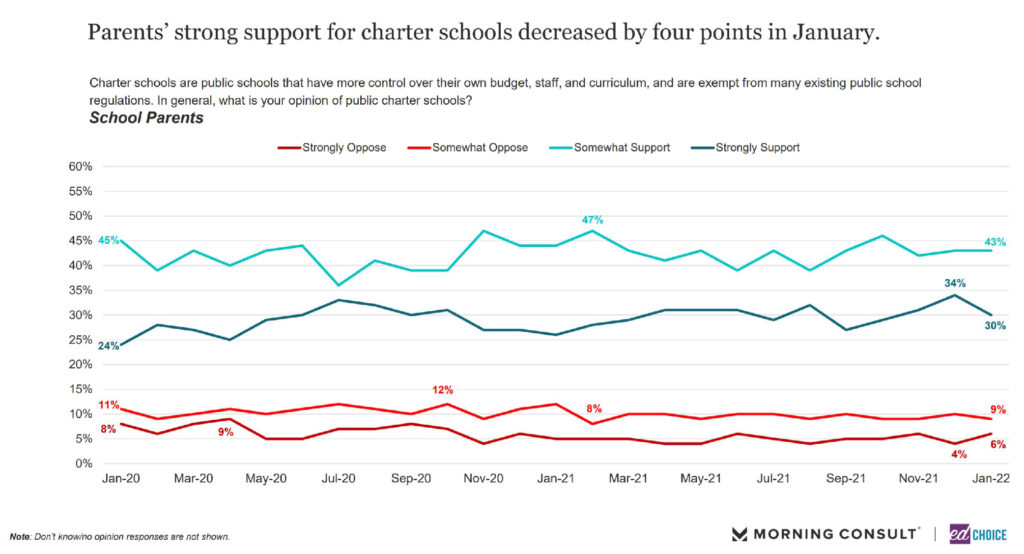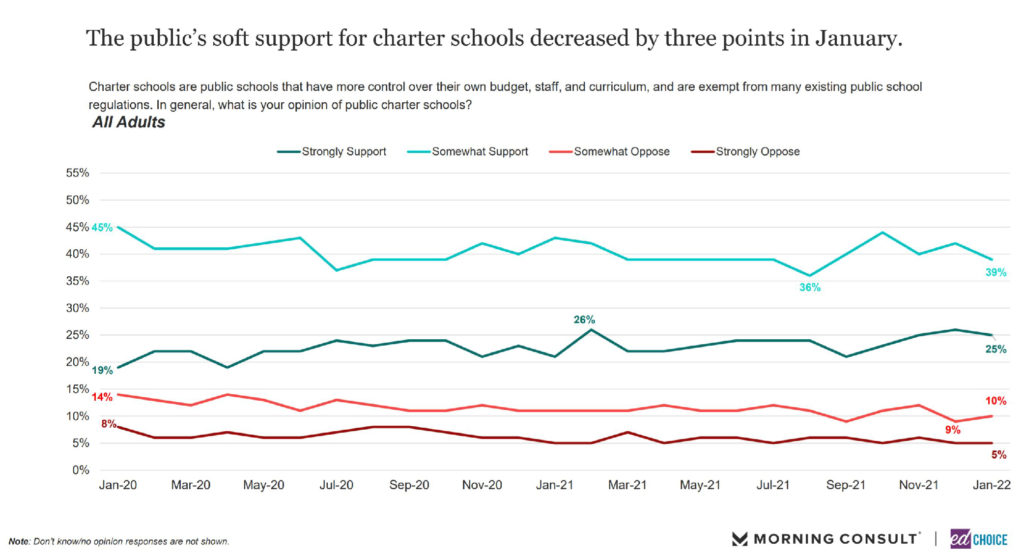EdChoice Public Opinion Tracker: Top Takeaways January 2022
Another new semester, another COVID surge. Just as the fall 2021 semester began under the shadow of the Delta variant, the highly-transmissive Omicron variant reshaped conversations about education and safety within a month.
The December wave of our monthly opinion tracker was in the field just two weeks after the first confirmed Omicron case in the United States, so we saw just the beginning of Americans’ reaction to the newest pandemic concern. Our latest polling wave was in the field January 15-16, 2022 (n = 2,200, including 1,252 parents of school-age children with an oversample of 700 school parents), which allowed Americans more time to experience Omicron’s effects.
This blog post highlights some of the ways COVID-19 is affecting Americans’—and especially parents’—perceptions of K–12 education.
Before we get into the key findings, you can visit this page on the EdChoice Public Opinion Tracker site to access past polling reports and briefs as well as demographic crosstabs and questionnaires. We also provide a more in-depth description of our methodology. Over the past two years, we have been cataloging education-related polls and surveys during the pandemic. Our K–12 Education Polls Archive is updated on a rolling basis, roughly a few times each month. Please don’t hesitate to let us know if we are missing any surveys, or if there are accidental errors.
We released our new polling report this week. Here are seven key findings from January:
1. Pandemic concerns appear higher regarding in-person education. Our broadest question about COVID-19 asks how disruptive the pandemic has been to communities, family and household routines, and personal routines. On this scale, essentially the same share of Americans felt that the pandemic was “very disruptive” in January as in December. “Very disruptive” responses increased by one percentage point for communities and household routines and no points for personal routines.
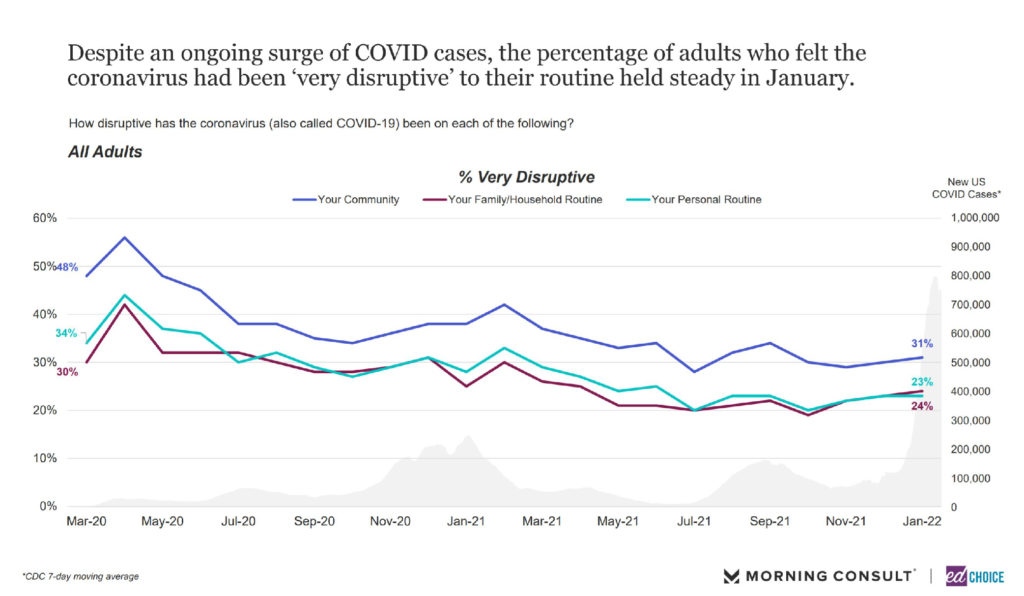
Turning the focus to in-person schooling, however, our poll found parents somewhat more pessimistic in January than they were in December. While a strong majority of parents were at least somewhat comfortable with their child attending school in person, the share of parents who were uncomfortable increased seven percentage points in January, which is the first month-to-month decline since July to August in 2021.
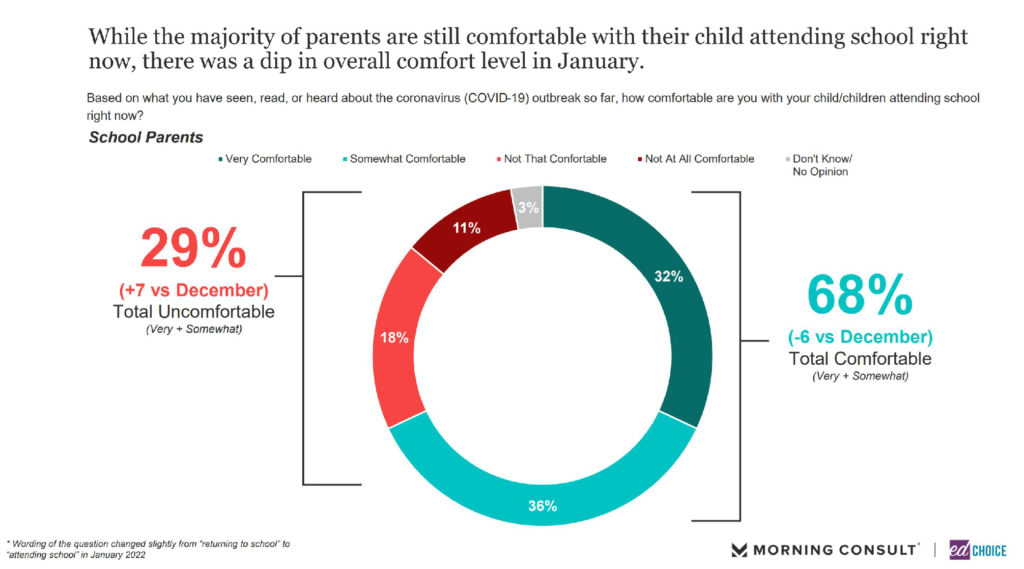
2. According to parents, the share of students who have had to quarantine from school the last month increased substantially. The vast majority of them viewed this as very disruptive to their education. For a few months now, we have asked parents if any of their children had quarantined from school in the past month. In November and December, about a quarter of parents said they had a child who quarantined. In January, that number jumped to 37 percent.
We asked a new follow-up question in January—how do parents with children who have quarantined think staying home affected their education? More than four out of five such parents—82 percent—said the quarantine was disruptive.
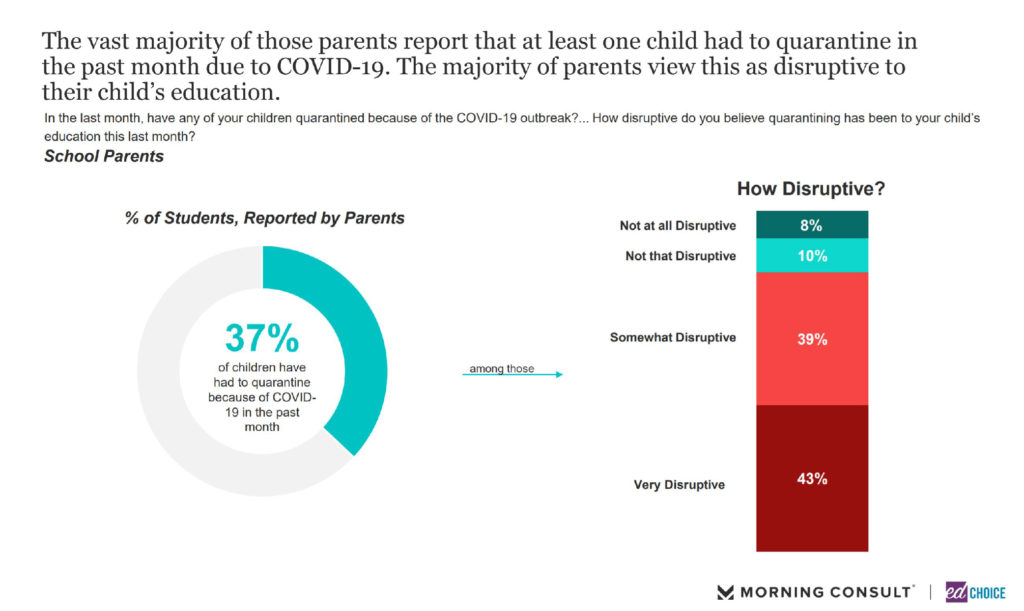
3. Private school and homeschool parents are more satisfied with their children’s schooling and development than district school parents. Parents who homeschool their children or send them to private school were twice as likely to be “very satisfied” with their children’s schooling experiences compared to parents who send their children to district schools. Total satisfaction rates for homeschool and private school parents were 90 percent and 88 percent, respectively, compared to 76 percent for district school parents. Charter school parents had the highest satisfaction rate at 92 percent, but unlike homeschool and private school parents, charter school parents were more likely to say they were “somewhat satisfied” than “very satisfied.”
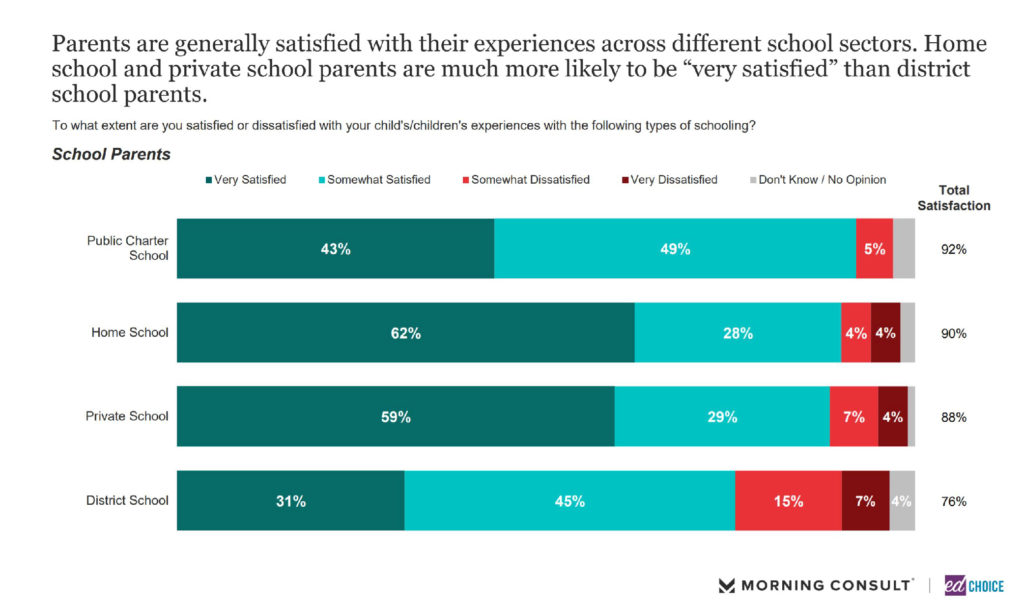
Similarly, homeschool and private school parents have seen more academic, emotional and social development in their children this school year than district school parents. Between private school parents and district school parents, academic development had the widest gap—private school parents were 21 points more likely to say their children were progressing very well this school year than district school parents. For emotional development, the gap was 19 points, and for social development, 12 points.
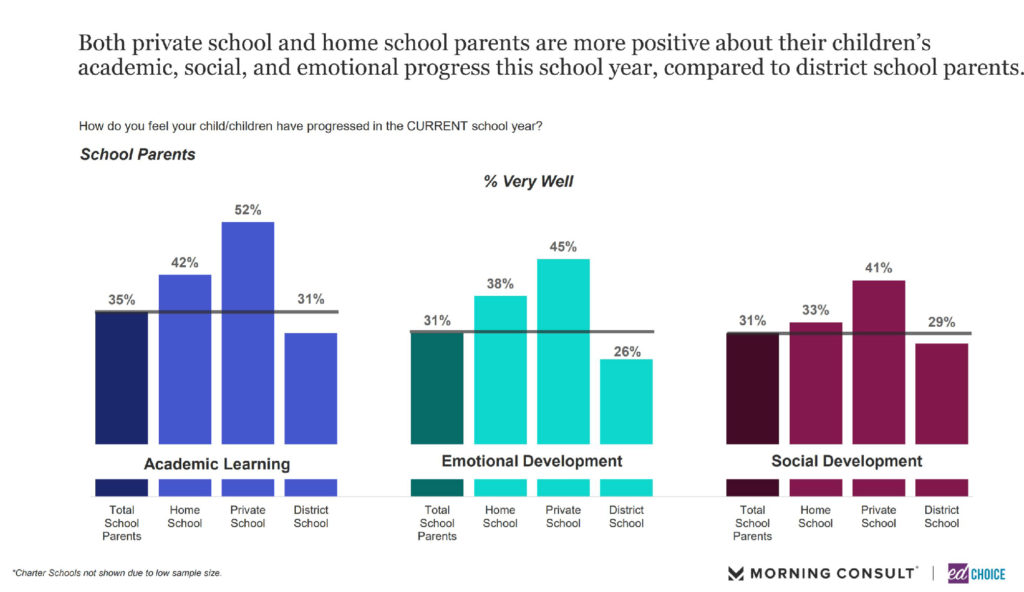
4. Most people hadn’t seen news connecting teachers’ unions and school closures. We asked all our respondents whether they had seen, read or heard anything about teachers’ unions moving to stop in-person learning in Chicago, or in a district local to them. As the Chicago case was a national news item, slightly more people were aware of it than any instances locally. However, less than half of parents and the general population said they knew about any such situation. Of those who were aware, there was roughly a 50-50 split between those who had seen positive coverage of the movement and negative coverage.
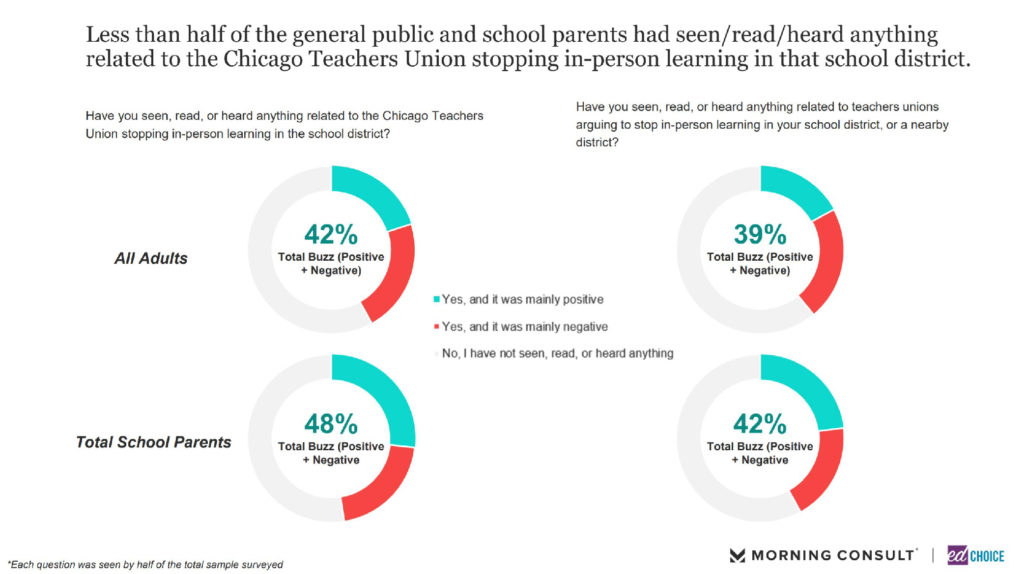
When asked about the general idea of moving to remote learning due to the Omicron variant, however, support among parents grew substantially. Three out of five parents supported shifting to remote learning due to pandemic concerns. Charter school and homeschool parents were especially supportive. District school parents were the least supportive of shifting to remote learning at 59 percent.
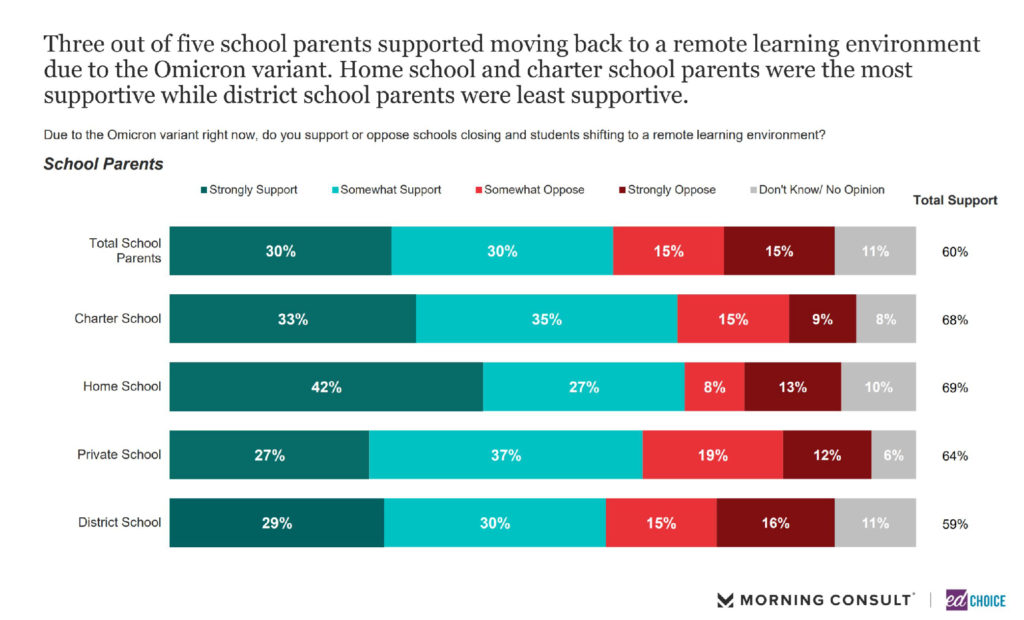
Political party ID appeared to be a major demographic factor for whether a person would support or oppose shifting to remote learning because of Omicron. Democrats were most supportive of making the transition at 71 percent, while Republicans were the least supportive group at 39 percent. Like party ID, we observed polarization based on community type. Sixty-three percent of urbanites supported shifting to remote learning compared to 44 percent of people from small towns and 47 percent of people in rural areas. Black Americans were the second-most supportive of closing and shifting to online.
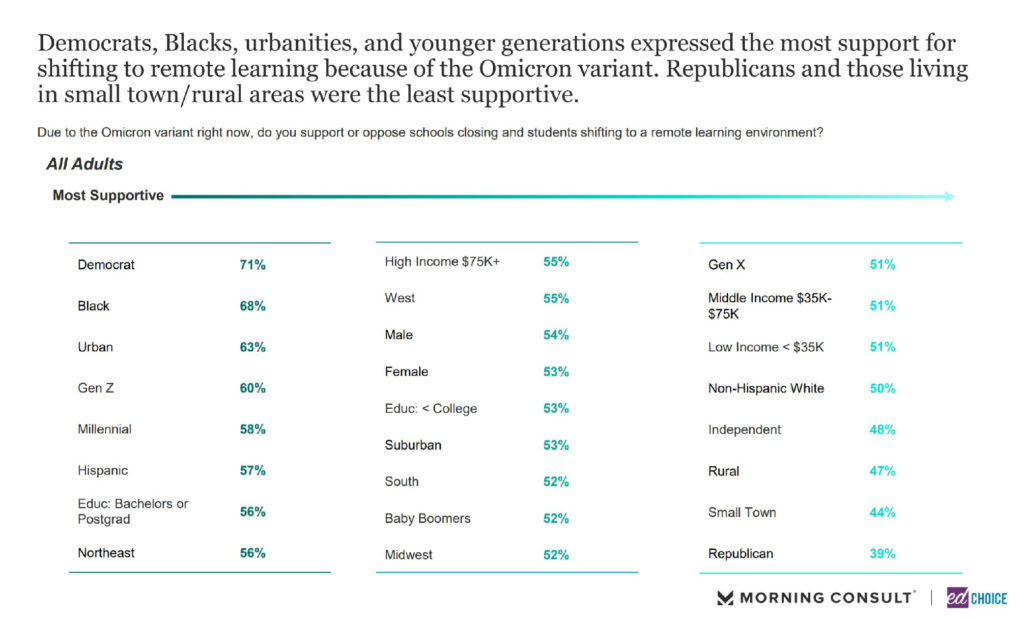
5. The general public has grown even more pessimistic about K–12 education than school parents. Our polling has consistently shown the public is more likely than parents to say K–12 education is off on the wrong track at the national, state and local levels. That trend continued this month as well. In fact, the share of adults who said K–12 education was heading in the right direction declined in January. A downward trend among parents started several months ago but has been relatively more gradual.
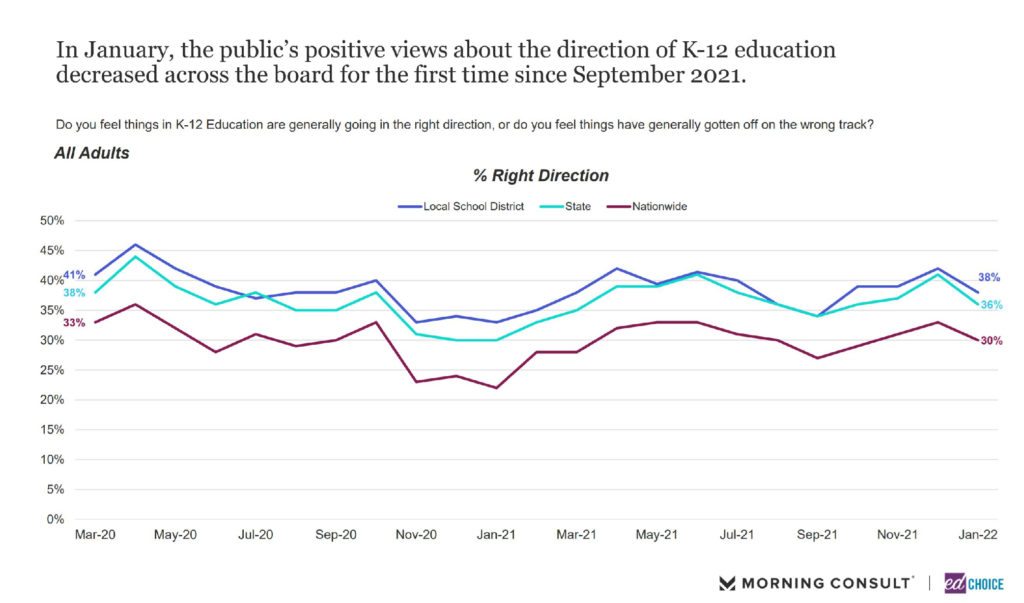
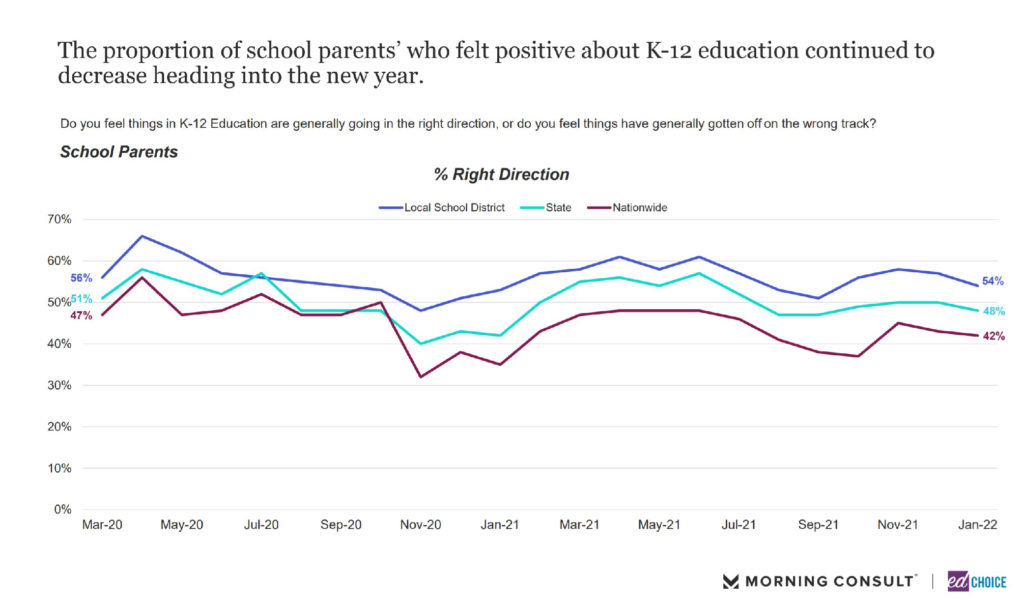
When asked to grade various government institutions’ handling of K–12 education, the relative pessimism of the general public shone through again. The share of adults who gave “A” or “B” grades to their school district board, state legislature, governor or the Biden administration all declined from December to January. Parents, on the other hand, gave “A” or “B” grades to state legislatures and the Biden administration at the same level as in December, and they actually increased high grades given to governors and school district boards.
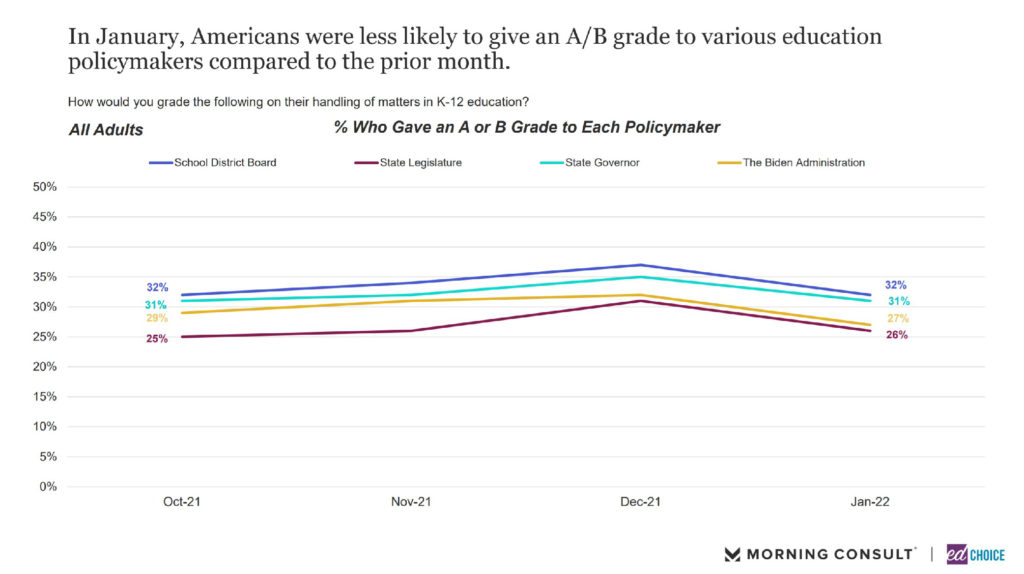
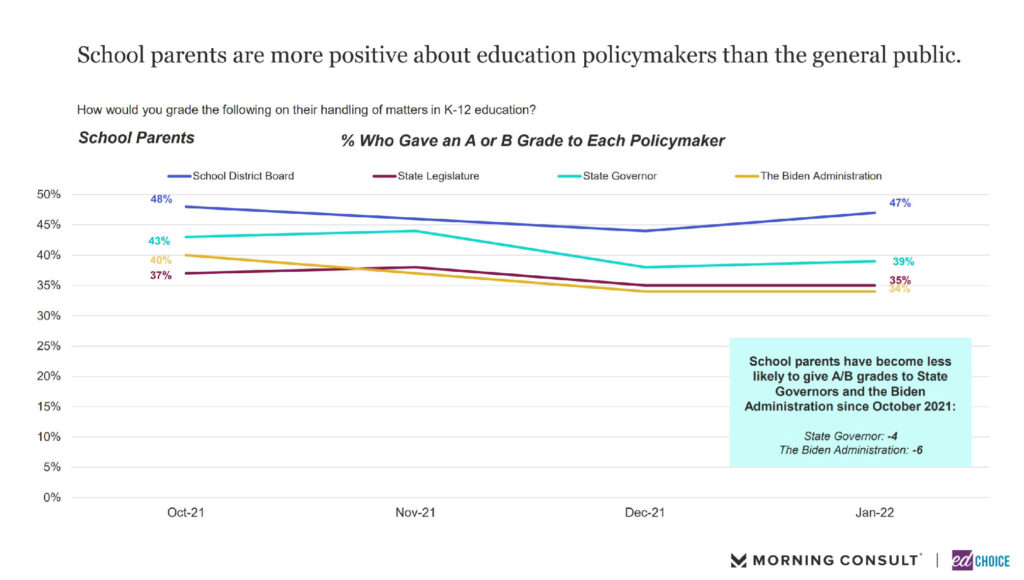
6. Honesty is the most-valued trait in education leaders. We asked people to name three traits they look for in leaders handling education matters. “Honesty” was the character trait most-listed. Relational traits “caring” and “compassion” also made the top 5, as well as the cognitive traits “intelligence,” “knowledge” and “smart.”
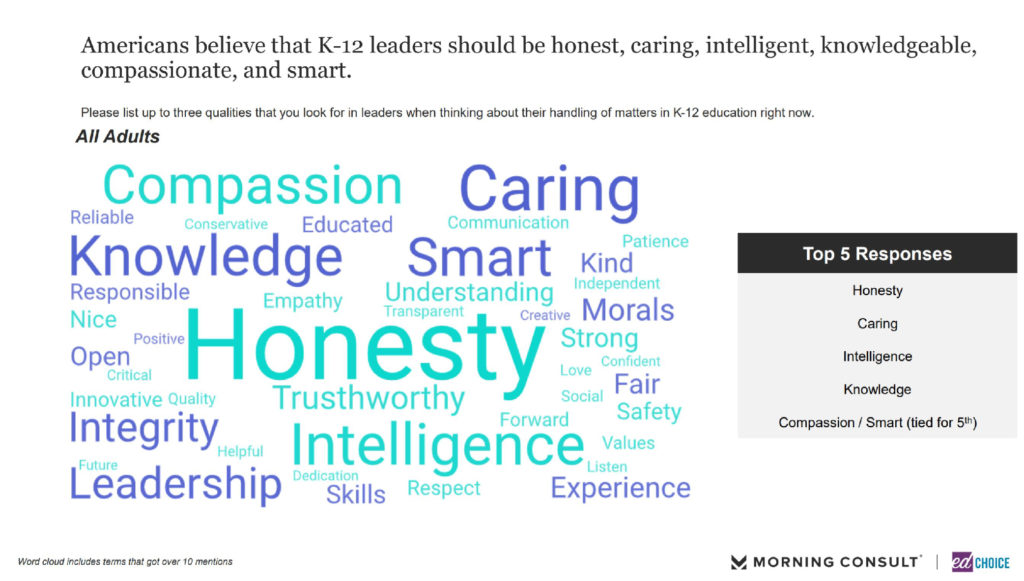
7. Three major school choice policies maintained high levels of support from both the public and parents, though support went down slightly from December to January. Among school parents, support for education savings accounts remained high, above 70 percent, as it has since we began our monthly tracker in January 2020. At 73 percent, though, support is eight percentage points lower than it was in December. Support among the general public declined six points and now sits at 64 percent.
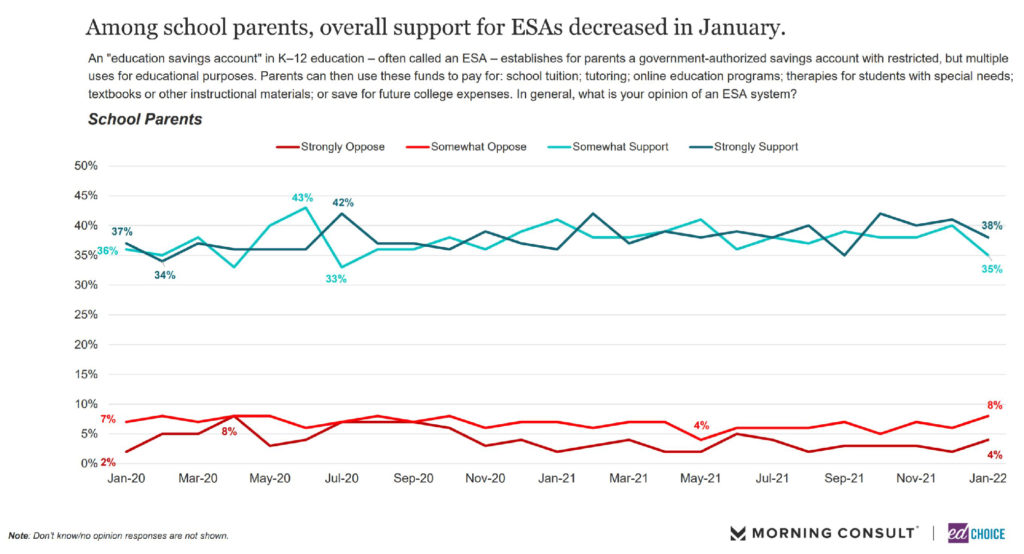
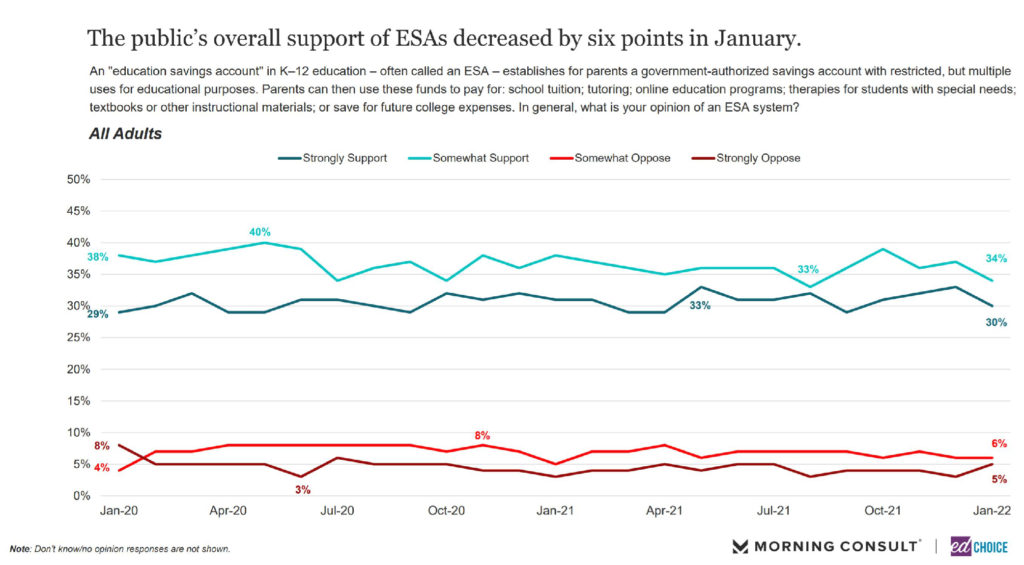
Similarly, school vouchers experienced a decrease in support in January, but remain popular with the majority of school parents. Among school parents, support declined four percentage points to 72 percent, and among the general public, support declined three percentage points to 62 percent.
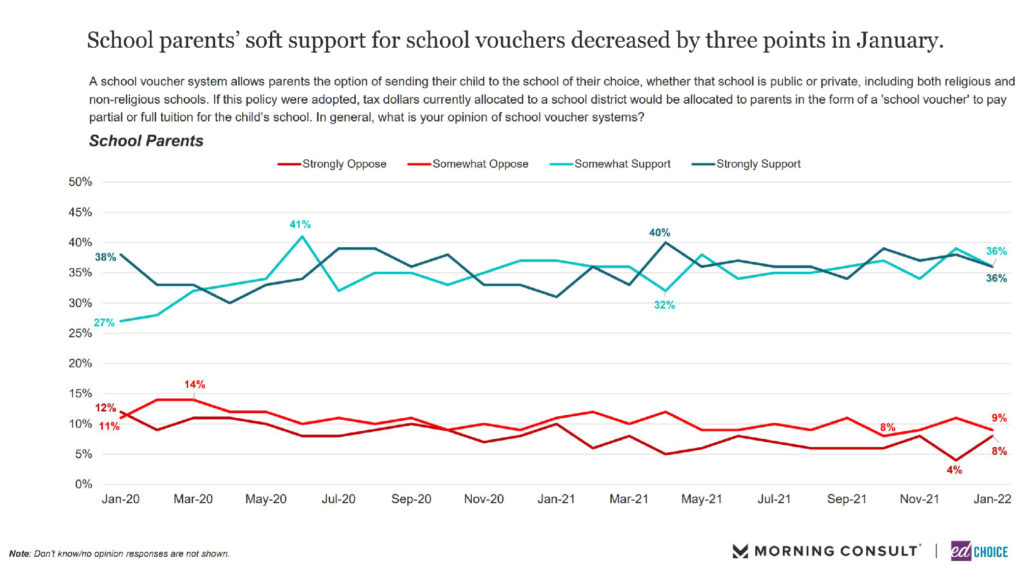
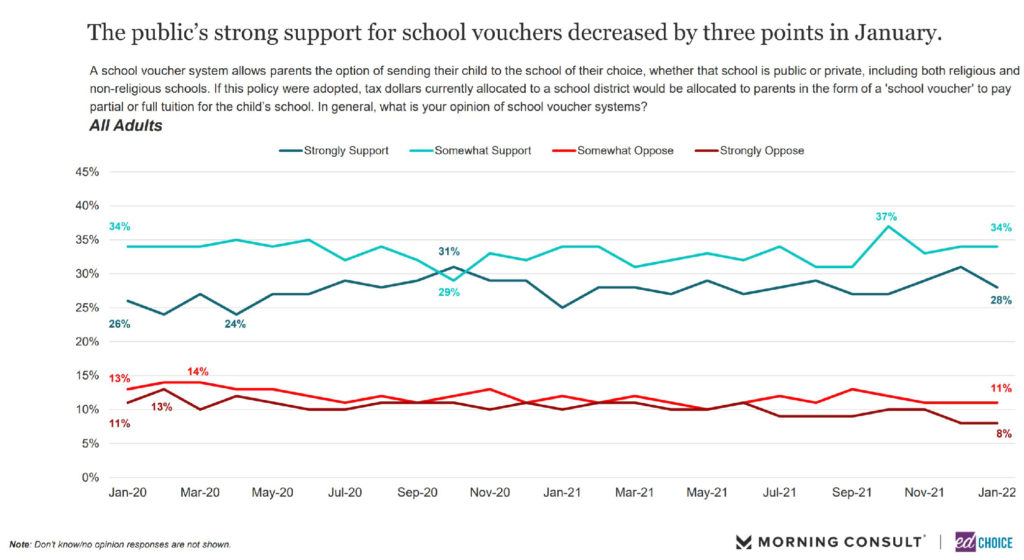
Charter schools’ support numbers look similar to school vouchers’ this month. Support for charter schools among parents declined four percentage points to 73 percent, and among the general public, support declined four percentage points to 64 percent.
